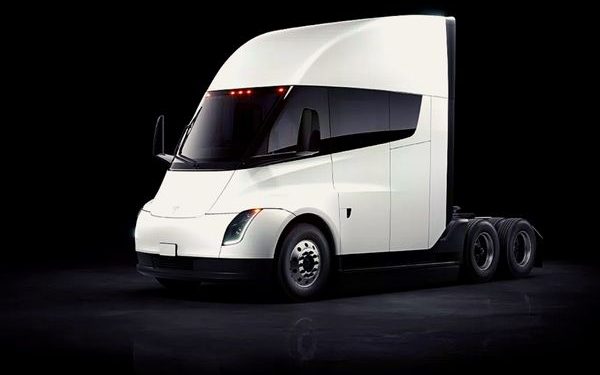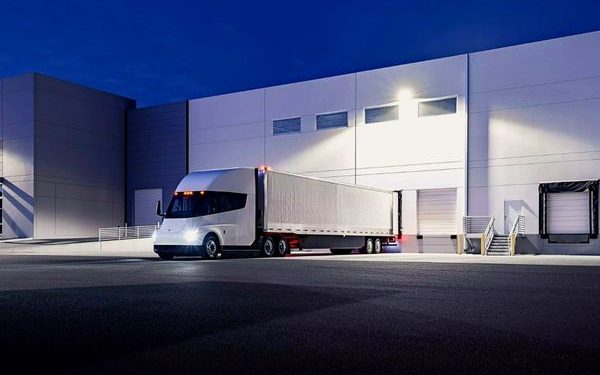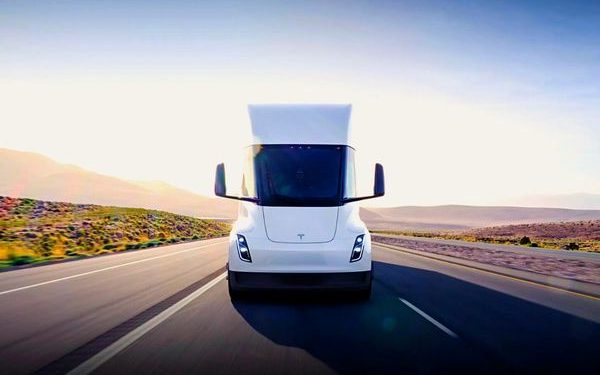Tesla’s latest electric semi-truck, the Tesla Semi, was announced in 2017 and is expected to hit the road later in 2023. The Semi’s outstanding characteristics and potential to change the trucking business have earned a great deal of attention.
Range is one of Tesla’s Semi most amazing features. The truck’s range on a single charge is 500 miles, which is sufficient for most long-distance trucking routes. Its range is made feasible by the Semi’s 16,000-pound battery pack. This is far heavier than the battery packs seen in Tesla’s passenger vehicles, but it is a requirement to power the Semi’s massive electric motors.
In addition to its remarkable range, the Tesla Semi possesses exceptional performance. In under 5 seconds, the vehicle can accelerate from 0 to 60 miles per hour, which is faster than the majority of diesel-powered semi-trucks. With its all-electric drivetrain and four separate motors, it can also climb steep gradients with ease.
Also, the Tesla Semi offers a number of innovations that make driving safer and more convenient. For instance, the truck is equipped with Improved Autopilot, which enables it to keep a safe distance from other vehicles and stay within its lane. In addition, it features a roomy and luxurious cabin with facilities such as a refrigerator and sleeping bunks.
The Tesla Semi’s ability to revolutionise the trucking business is a major factor in its huge popularity. Electric vehicles are substantially less expensive to maintain and operate than diesel-powered trucks, so the truck has the potential to significantly cut operating costs for trucking businesses. Also, the Semi’s range and speed make it ideal for long-distance routes, which are now dominated by diesel-powered vehicles.
Furthermore, Tesla stated that charging with electricity is around 2.5 times less expensive per mile than diesel fueling. Estimated fuel savings during the first three years of ownership are approximately $200,000. With remote diagnostics, wireless software upgrades, and fewer moving parts to maintain, operators will spend less time in service centers and more time on the road.
“For the vast scope, Combination trucks are responsible for around 18 percent of U.S. vehicle emissions; Semi will help change this,” Tesla said on its website. “Semi can go up to 500 kilometres on a single charge, using less than 2 kWh per mile of electricity and regain up to 70 percent of range in 30 minutes using Tesla’s Semi Chargers.”
Similarly, active safety elements are paired with modern motor and braking controls to provide traction and stability in all weather situations. A central seating position improves the driver’s field of view, whereas an all-electric chassis decreases the chance of rollover and cabin intrusion in the event of an accident.
Speaking on its low cost of ownership, Tesla said ‘Charging with electricity is approximately 2.5 times cheaper per mile than refueling with diesel.* Operators can see estimated fuel savings of up to $200,000 within their first three years of ownership. With remote diagnostics, over-the-air software updates and fewer moving parts to maintain, operators will spend less time at service centers and more time on the road.
On maximum safety, Semi comes standard with active safety features that pair with advanced motor and brake controls to deliver traction and stability in all conditions. A central seating position gives the driver better visibility, while an all-electric architecture reduces both rollover risk and cabin intrusion in case of an accident.
Read also: Elon Musk rides Tesla shares surge to reclaim “world’s richest person” spot
A variant of the Semi truck is anticipated to cost $150,000 for the 300-mile range model and $180,000 for the one that attains a 500-mile range.
A potential game-changer is that Tesla claims that the Semi will be able to prevent jackknifing, keep drivers in their lanes, check their distance from other cars, and has more safety measures than any other truck on the market, all at a lower price, with future plans to improve the truck.
After dominating about 16 percent of the plug-in and hybrid vehicle markets as well as capturing about 23 percent of the battery-electric vehicle market, the EV maker is not relenting in its ambition to revolutionise one of the most vital markets (the commercial transportation of goods or cargo) with the introduction of the Tesla Semi.



























